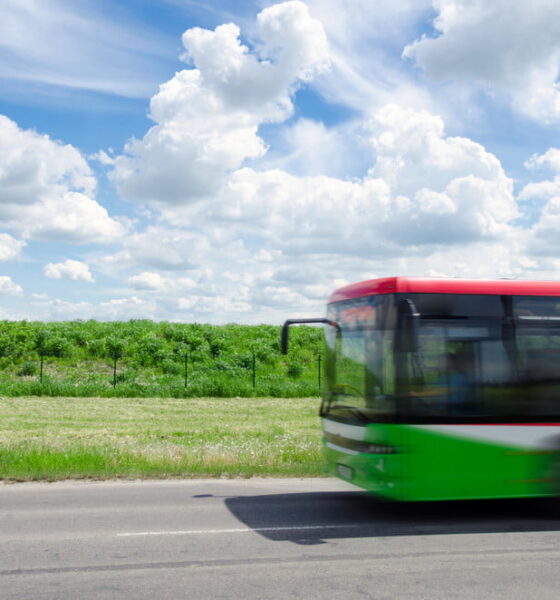

Travel
4 Green Tips to Prepare Your Vehicle for Your Next Vacation
One of my friends is very environmentally conscious. She wanted to take a road trip across the country when she gets a three-month sabbatical from her job. However, she decided against it, because she felt that she would be contributing too much to global warming.
Are you planning on going on a vacation in the near future? If you are planning on driving, you may be worried that you will be leaving too much of a carbon footprint. You don’t need to be too worried about this because there are plenty of ways that you can make your vehicle greener and leave less pollution.
Here are some excellent ideas to make your car more energy efficient. You will help the environment and cut your travel bill at the same time!
1. Look for Ways to Reduce the Weight of Your Vehicle
Lowering the weight of your vehicle is the best way to make it more energy efficient. A 2012 study by William Joost of the Department of Energy states that transportation is responsible for 28% of the country’s energy consumption. Joost found that every 10% reduction in weight improves energy efficiency by 6-8%.
There are a variety of ways to make your vehicle more organized and reduce its weight without affecting its performance. Here are some tips:
- Newer race batteries can function about as effectively as conventional ones. They weigh about half as much.
- You can reduce your vehicle weight by nine pounds by removing the air conditioning compressor and heating matrix fan and piping system.
- One of the easiest ways is to remove unnecessary hubcaps from your car.
- If you aren’t traveling with more than one passenger, you can remove 15 pounds or more by removing the rear seats. This will also provide more room for your luggage. You can always reinstall them after you are done with your trip.
- You can eliminate another 12 pounds or more by switching to polycarbonate windows and lighter body panels.
If you make a number of modifications like these, you should have no trouble cutting the weight of your vehicle by 400 to 800 pounds. This will improve energy efficiency by 8 to 16%.
2. Install Rolling Resistant Tires
Have you ever stopped to think about how much energy is lost with slippage? It can be very high, especially traveling on inclining terrain, wet climates or areas where your speed needs to vary and your car struggles to maintain inertia.
The Department of Energy found that the average vehicle uses 5-15% of its total energy trying to overcome rolling resistance. Using rolling resistant tires can be a great way to improve energy efficiency. According to the Department of Energy’s research, every 10% reduction in rolling resistance improves energy efficiency by 1-2%.
3. Use a More Energy Efficient Type of Gasoline
The type of gasoline that you use makes a big difference. You may want to consider switching to a more energy efficient type.
Edmunds reports that you can make this switch even if your owner’s manual recommends using premium gasoline.
“The key for drivers is to know whether premium gasoline is merely recommended for their car or if it’s required. In today’s automobiles, advances in engine technology mean that even if the owner’s manual recommends premium gasoline, the car will typically run on regular without issue and won’t damage the engine in any way. The car’s performance might suffer only slightly: It might be a half-second slower from zero to 60 mph, for instance. But the average driver isn’t likely to notice this drop-off. Drivers used to buy a tank of premium every once-in-a-while to clean their engines. Years ago, premium gasoline contained more detergents and other additives to stop carbon deposits. But experts say that now, because of government regulations aimed at cutting emissions, most major brands of gasoline have plenty of additives in all grades to both protect engines and cut pollution.”
4. Drive Different
It goes without saying, but driving better will also cut your vehicle emissions. Driving too fast or unevenly will make your vehicle operate less efficiently.
Controlling your braking and keeping your speed lower is the most important thing. According to recent studies, 50% of all fuel consumption while driving in urban areas is due to changes in speed. Frequent, unnecessary braking can increase fuel consumption by 40%.
You should also try to keep your vehicle below 55 miles per hour. Driving at 55 miles per hour instead of 65 can increase fuel efficiency by 10-15%.
Help the Environment by Preparing Your Vehicle for Your Vacation Road Trip
If you are concerned about your carbon footprint, you don’t need to stay home (like my friend) for your next vacation. There are plenty of ways that you can fix your car to operate more fuel efficiently. Following these tips will go a long way. You will save money on fuel and protect the environment at the same time!


 Environment10 months ago
Environment10 months agoAre Polymer Banknotes: an Eco-Friendly Trend or a Groundswell?

 Environment11 months ago
Environment11 months agoEco-Friendly Home Improvements: Top 7 Upgrades for 2025

 Features9 months ago
Features9 months agoEco-Friendly Cryptocurrencies: Sustainable Investment Choices

 Features10 months ago
Features10 months agoEco-Friendly Crypto Traders Must Find the Right Exchange





























